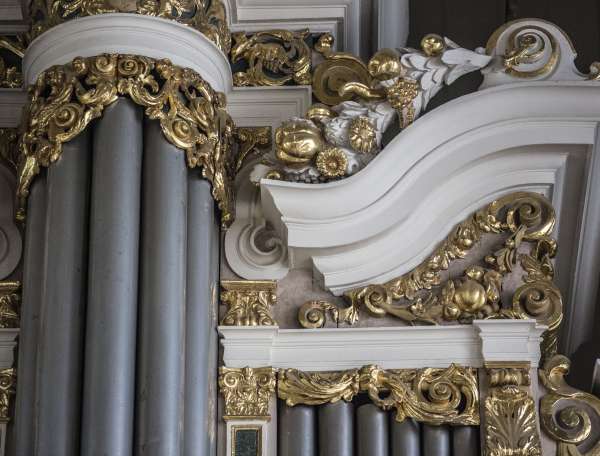

Nun komm, der Heiden Heiland
BWV 661 performed by Leo van Doeselaar
Walloon Church, Amsterdam
Behind the music
Lighting up the world
In the finale of the 'Nun komm, der Heiden Heiland' trilogy, Bach lets the light shine from all angles
Bach had no choice but to radiate when closing his trilogy on the chorale Nun komm, der Heiden Heiland, especially as the organ had to remain silent for a while following the first Sunday in Advent. After a subdued arrangement (BWV 659) and rather tormented one (BWV 660), the hopeful story was finished off, as it were, with this jubilant version. As so often in Bach’s trilogies, the chorale is given in the bass here, as the foundation of a loud plenum. For all its variety, the trilogy forms such a wonderful unity that Bach’s pupil Johann Christian Kittel used it in his own lessons as an example, and he was certainly not the only one to do so.
Before the bass introduces the melody in its full glory, Bach constructs a varied fugue. You can just make out the outlines of the choral melody in the theme, which keeps recurring in two ways: rectus (‘normal’) and inversus (in reverse – all the steps of the original melody that ascended now descend, and vice versa). This occurs for the first time just after the second chorale phrase, followed by a repeat of earlier material, which is also ‘upside down’. Above the last sentence of the chorale, we even hear the ‘upright’ and the reversed versions of the theme together, maybe in order to express the light in the phrase ‘Der Glaub’ bleibt immer im Schein’.
18 Choräle/Leipziger Choräle, BWV 651-668
In the last ten years of his life, Bach gathered together and completed a series of chorale arrangements, presumably planning to have them published, just like the third part of the Clavier-Übung in 1739. It concerns a selection of his compositions from much earlier years, when he was working as an organist in Weimar, Arnstadt and Mühlhausen. The collection became known as the 18 Choräle or Leipziger Choräle. Incidentally, 18 Choräle is a misleading title, as the set originally comprised 17 pieces. The eighteenth, Vor deinen Thron tret ich (BWV 668), was added to Bach’s manuscript later on.
- BWV
- 661
- Title
- Nun komm, der Heiden Heiland
- Instrument
- organ
- Genre
- organ works
- Serie
- 18 Choräle (organ)
- Year
- first version (BWV 661a) in manuscript 1714-17, manuscript BWV 661 1739-42
- City
- Weimar/Leipzig
- Special notes
- BWV 661a is an earlier version with a slightly different notation.
Extra videos
Vocal texts
Original
Translation
Credits
-
- Release date
- 16 January 2015
-
- Recording date
- 23 June 2013
-
- Location
- Walloon Church, Amsterdam
-
- Organist
- Leo van Doeselaar
-
- Organ
- Christian Müller, 1734
-
- Producer
- Frank van der Weij
-
- Film director
- Jan Van den Bossche
-
- Directors of photography
- Sal Kroonenberg, Ruben van den Broeke
-
- Grip
- Antoine Petiet
-
- Music production, editing and mix
- Holger Schlegel
-
- Film editor
- Dylan Glyn Jones
-
- Colorist
- Jef Grosfeld
-
- Production assistants
- Marco Meijdam, Zoë de Wilde
Discover
Help us to complete All of Bach
There are still many recordings to be made before the whole of Bach’s oeuvre is online. And we can’t complete the task without the financial support of our patrons. Please help us to complete the musical heritage of Bach, by supporting us with a donation!

